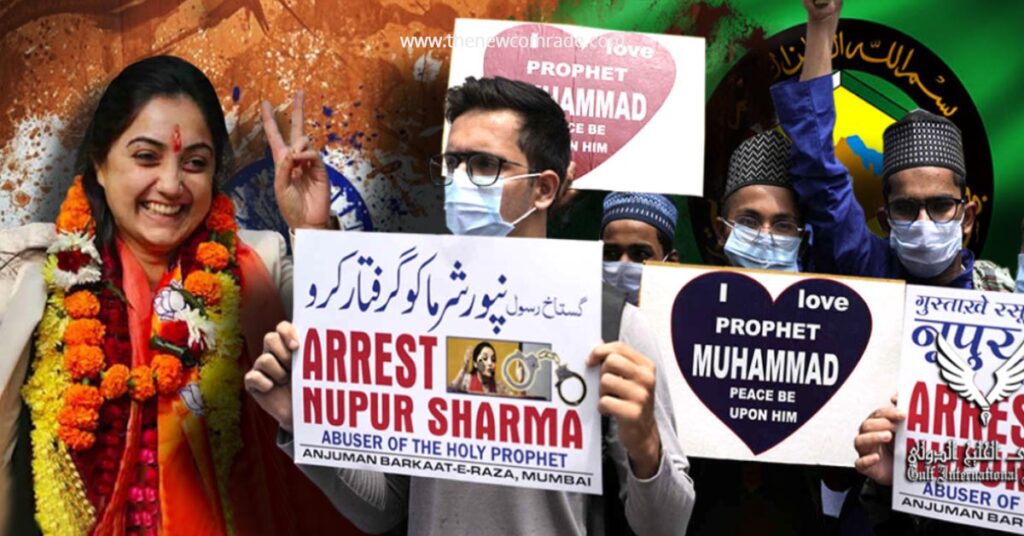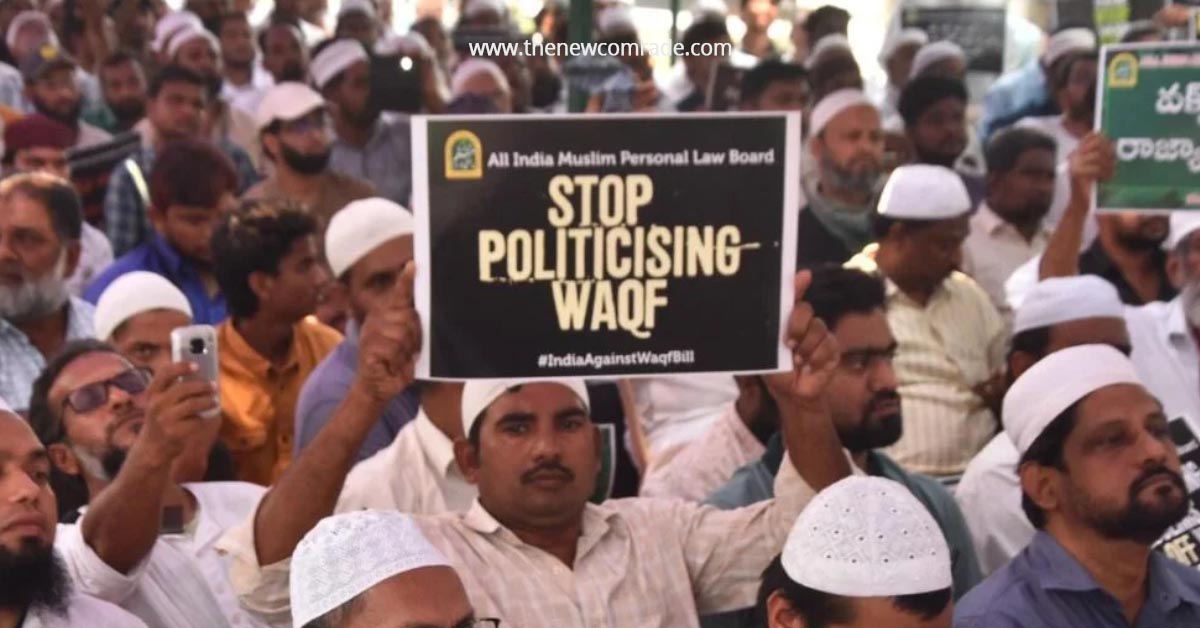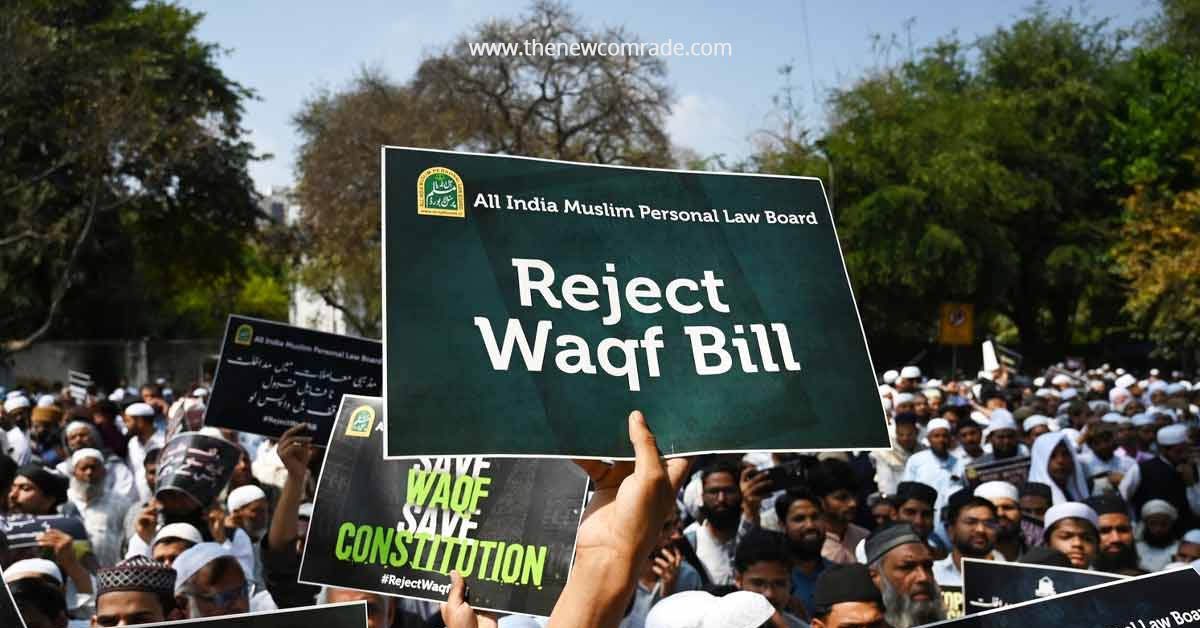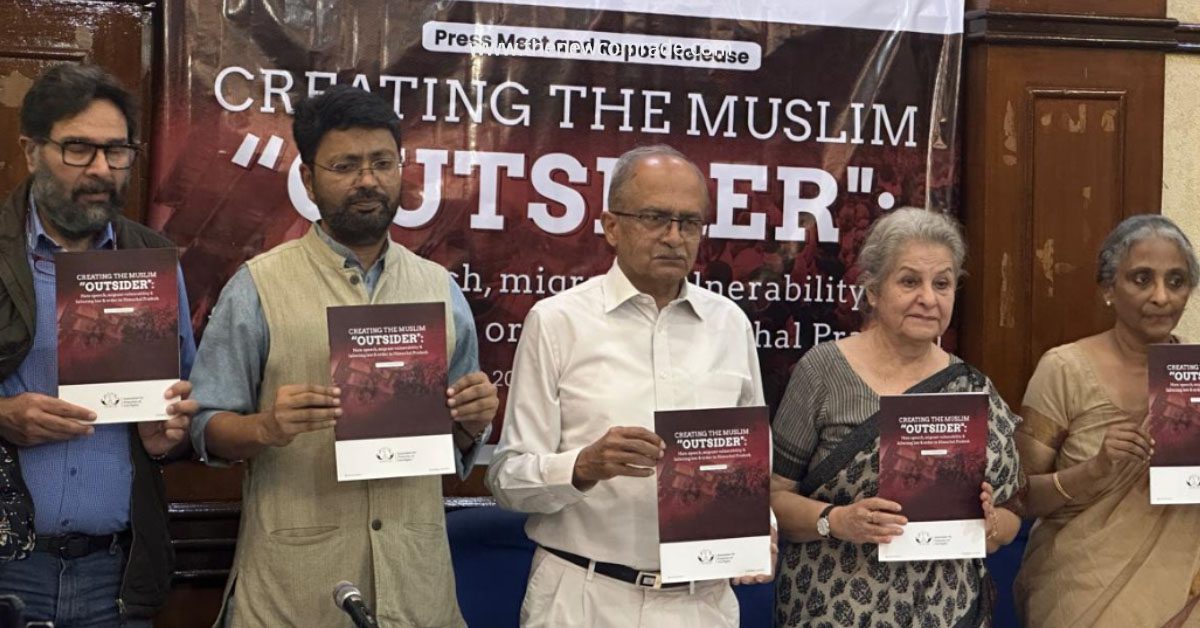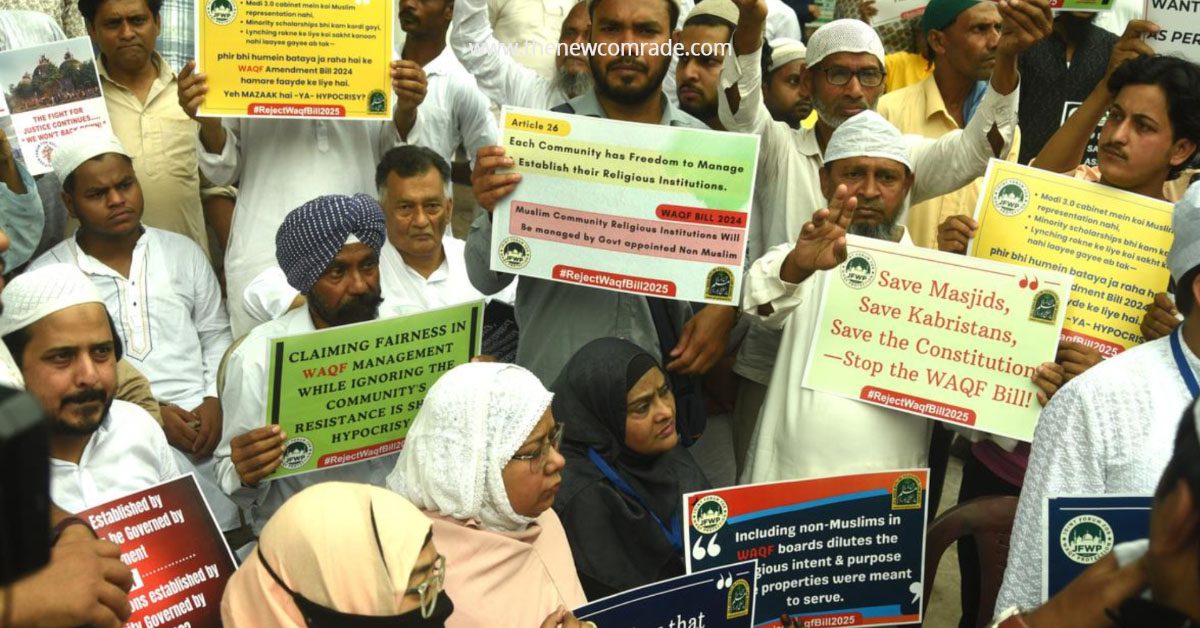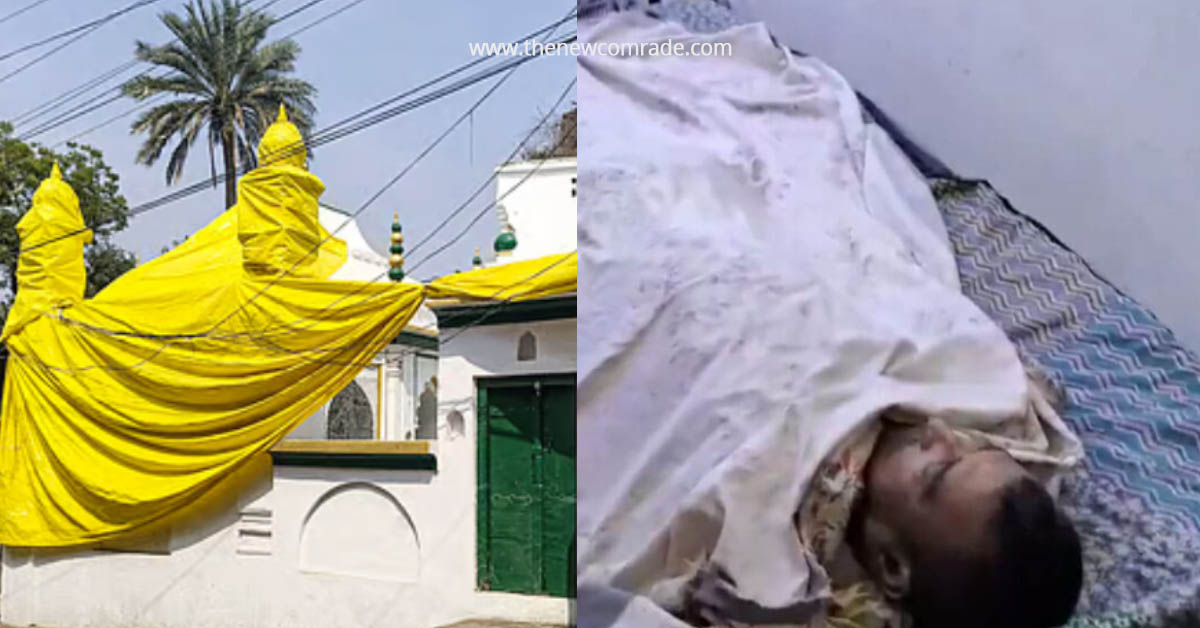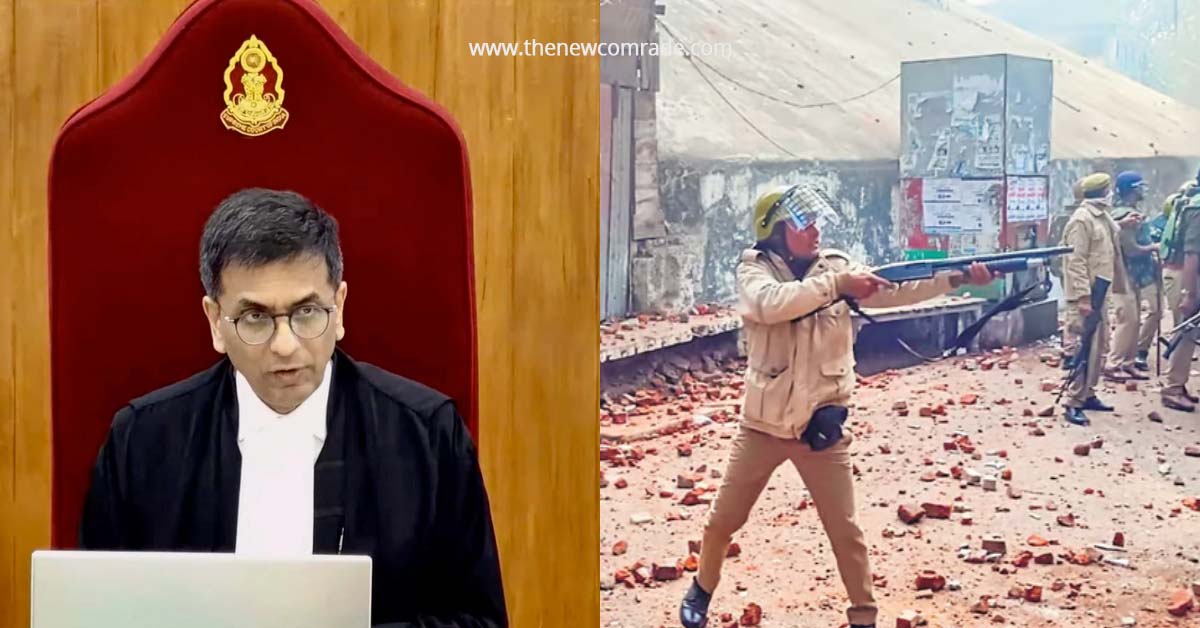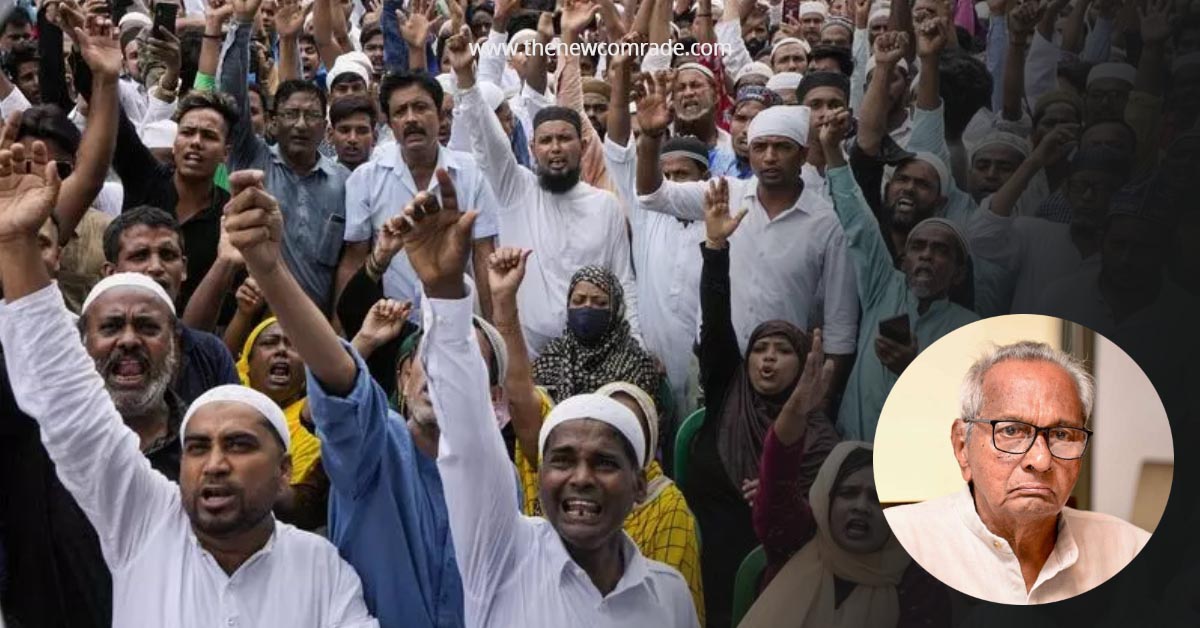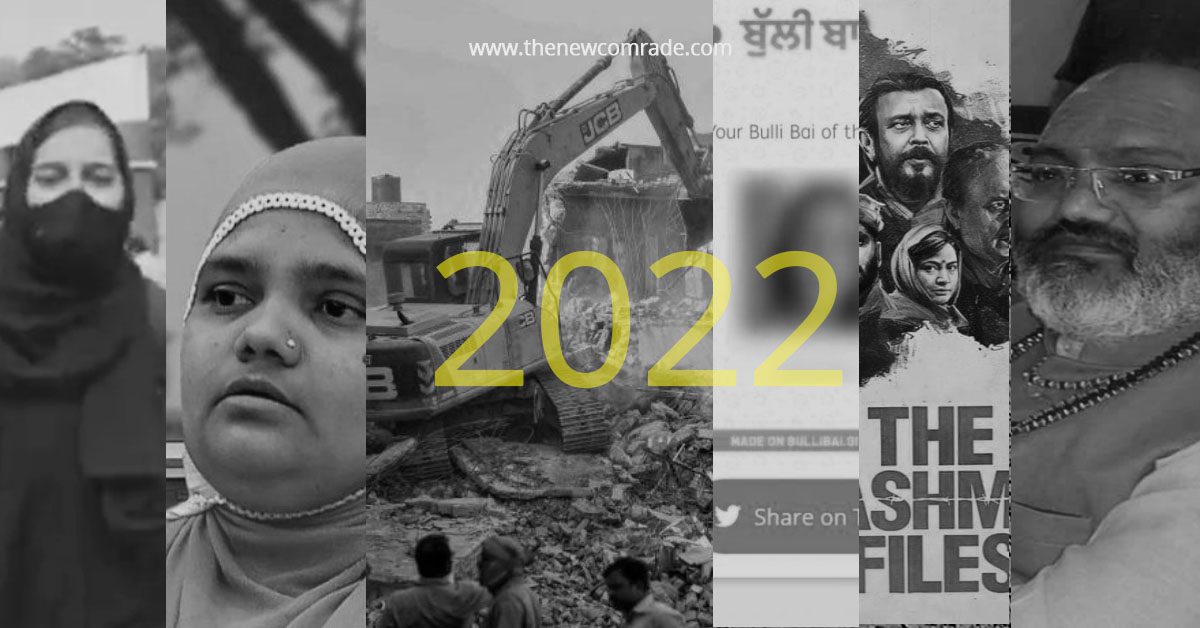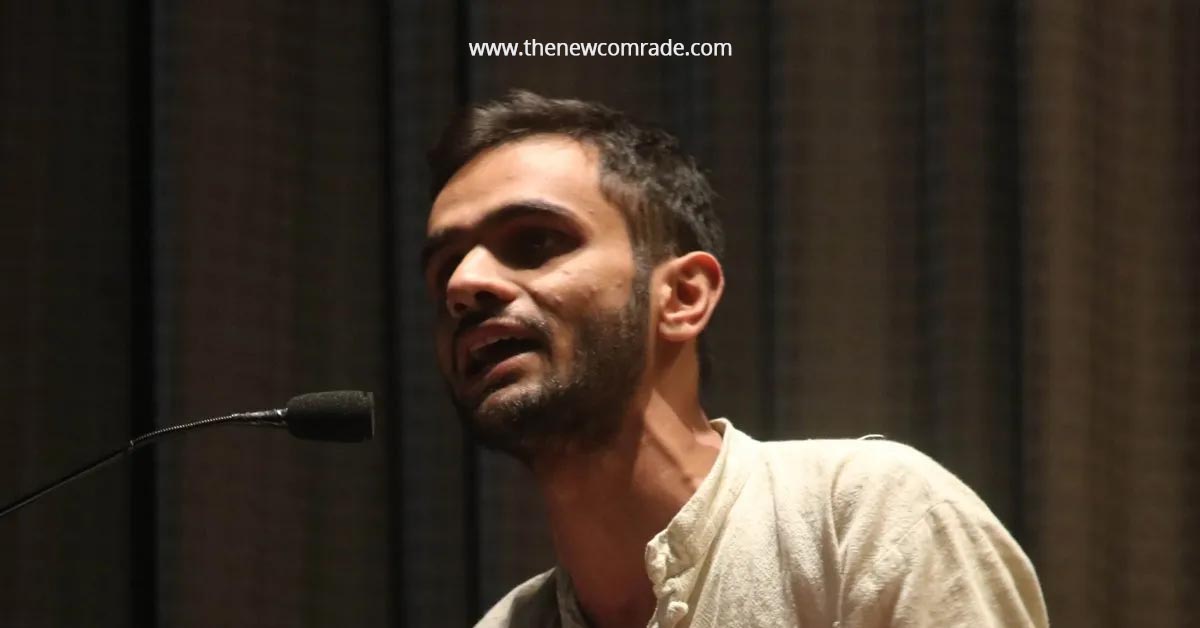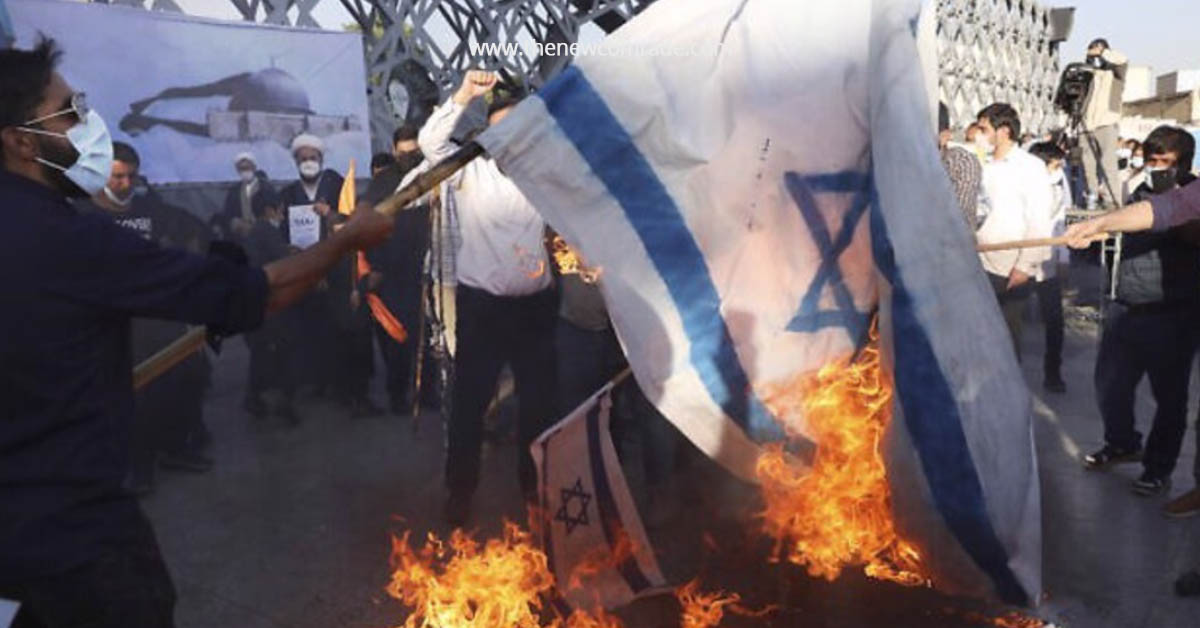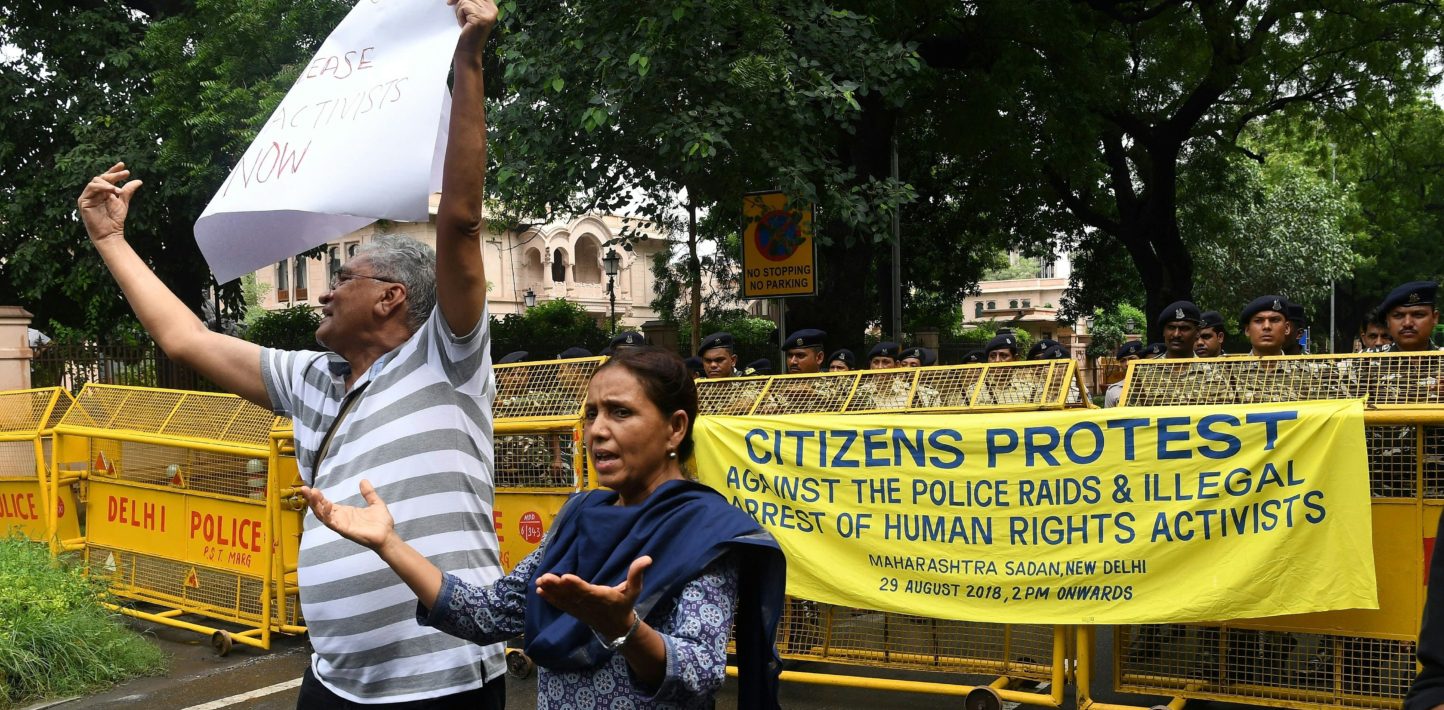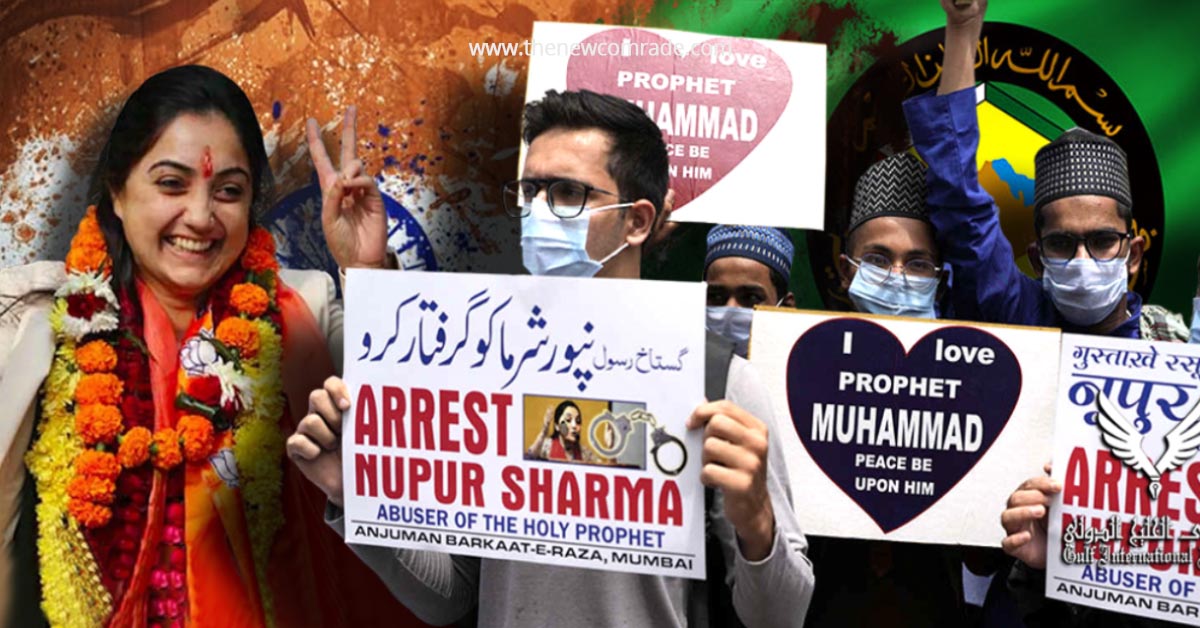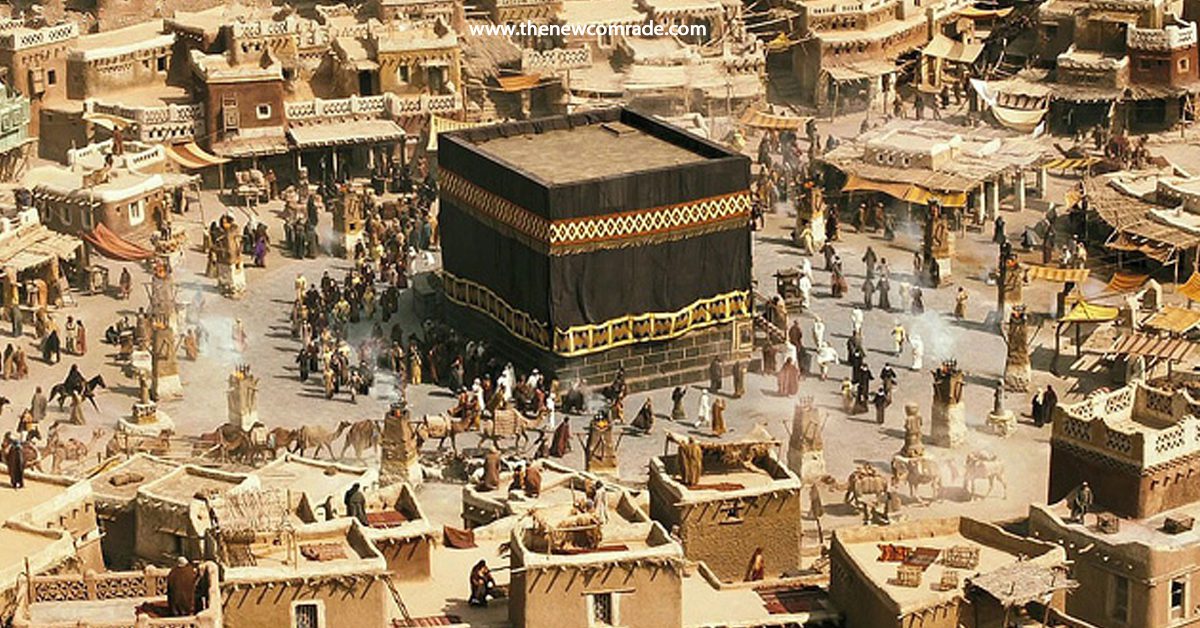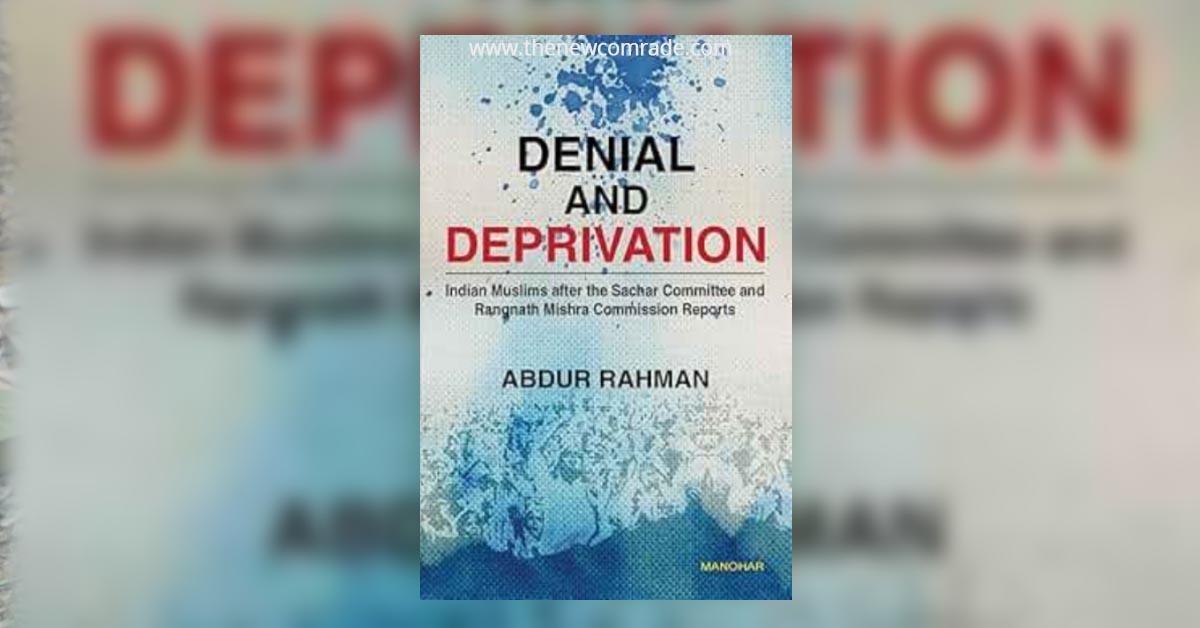The recent assault on the “I Love Mohammed ﷺ” posters in Kanpur is not an isolated act of hate — it is yet another chapter in the ongoing campaign of hostility driven by Hindutva forces against the Prophet Mohammed ﷺ and those who love and follow him. Across India, the forces of Hindutva have systematically targeted the Prophet ﷺ through violent actions, organised propaganda, and relentless mockery on social media.
From rallies to online platforms, their members openly spread hatred — circulating offensive posters, making blasphemous remarks, and instigating divisions — with the complicity of those in power. This orchestrated attempt to insult the Prophet ﷺ is not merely an attack on a community’s belief; it is a deliberate provocation aimed at normalising Islamophobia and erasing the values of respect and coexistence.
The Kanpur incident stands as a painful reminder of the long way Hindutva extremism has come, weaponising hate against the most revered figure in Islam. Exposing these patterns is not just a duty — it is a call to awaken the conscience of all who stand for justice, and dignity.

The latest controversy erupted in Kidwai Nagar, Adarsh Colony, and Maliknagar, as residents displayed banners expressing their deep love and devotion to Prophet Mohammed ﷺ on streets, house railings, and public areas. Instead of respecting this peaceful gesture, members of the Bajrang Dal, led by Madhur Nehra, launched protests, branding the posters a “conspiracy” to disrupt communal harmony. They lodged complaints and even threatened police that if no action was taken, they would “remove the posters themselves.”
Within hours, police teams arrived and tore down the banners in front of local residents. “We had only expressed love for Prophet Mohammed ﷺ. Is that a crime?” asked Irfan Malik of Modinagar, voicing a sentiment shared by many. “Posters for Hindu gods and political leaders appear everywhere without permission, yet Muslims are singled out.”
The discriminatory removal triggered a counter-campaign from Hindutva groups. In retaliation, banners proclaiming ‘I Love Yogi,’ ‘I Love Shri Ram,’ ‘I Love Mahadev,’ and even ‘I Love Bulldozers’ appeared across Ghaziabad and on social media, with videos of these displays going viral and inflaming tensions further.
“This is clear discrimination,” said social worker Mohammed Rizwan. “Hindu posters remain untouched, but Muslim ones are instantly removed.” Rights activists have long pointed out that massive cut-outs of Hindu festivals and political figures regularly appear across Uttar Pradesh without police interference or objection.
“If permissions are required, they must apply to everyone. The law cannot be selective,” argued Advocate Faheem Ansari, condemning the bias. Yet, police refused to clarify why the counter-posters were allowed to remain.
Despite intimidation and unequal treatment, many Muslims in Ghaziabad have vowed to continue their campaign. “No power can stop us from loving our Prophet ﷺ,” declared a youth from Maliknagar. “The real question is — why is our devotion treated as a crime?”
A growing pattern of targeted hate
The Kanpur incident is not an exception — it is part of a larger, systematic pattern in which Hindutva groups have repeatedly attacked expressions of faith, love, and reverence for Prophet Mohammed ﷺ. From blasphemous remarks by political figures to mob violence against peaceful gatherings, these acts reveal a deeper xenophobic, barbaric agenda — one that thrives exclusively on incitement, discrimination, and the marginalisation of Muslims across India.
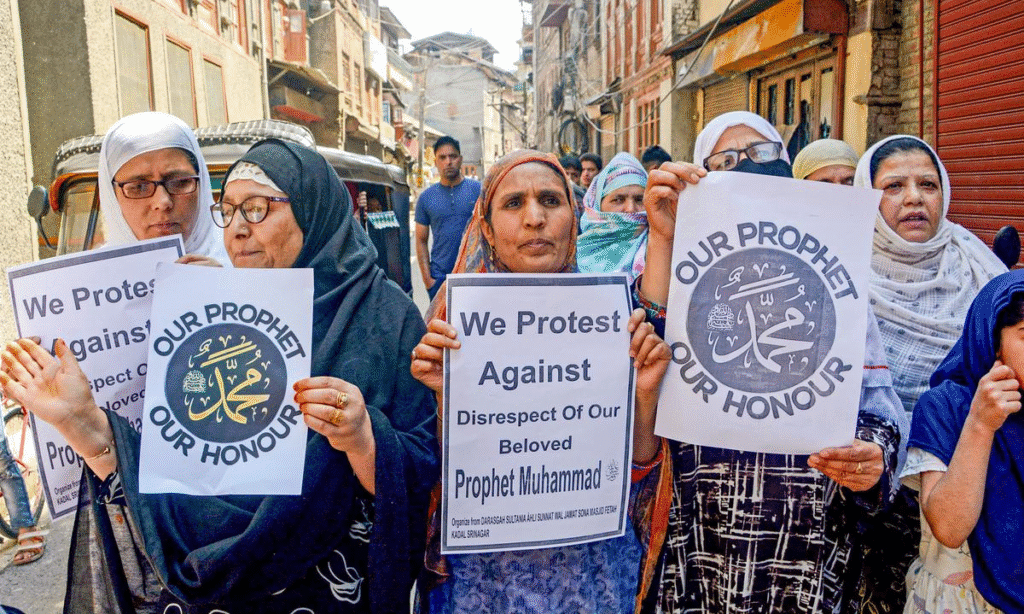
Over the past few years, numerous incidents have exposed how hate against the Prophet ﷺ has become a tool of political mobilisation and social polarisation under Hindutva influence:
1. Nupur Sharma’s Blasphemous Remarks (2022)
In one of the most shocking incidents, BJP spokesperson Nupur Sharma made deeply offensive remarks against Prophet Mohammed ﷺ during a televised debate. Instead of swift action, she was initially defended by party members and right-wing media. The resulting outrage led to international condemnation, diplomatic protests from Muslim nations, and widespread demonstrations across India. Many peaceful protesters were later harassed, arrested, or even killed, revealing how the state response further victimised the aggrieved community.
2. Haridwar Dharam Sansad Hate Assembly (2021)
At a so-called “religious parliament” held in Haridwar, extremist Hindutva leaders openly called for violence and genocide against Muslims, glorifying hate in the name of religion. The assembly included repeated derogatory mentions of the Prophet ﷺ and Islam, with participants urging Hindus to arm themselves. Despite widespread outrage, no meaningful action was taken against the speakers, highlighting state complicity and selective justice.
3. BJP Legislator Raja Singh’s Hate Speech in Telangana (August 23, 2022)
Another glaring instance of state-linked blasphemy came from Raja Singh, a sitting legislator of the Bharatiya Janata Party (BJP) and a habitual Islamophobe known for his hate-filled rhetoric. In August 2022, Singh was arrested in Telangana after releasing a video containing offensive and criminal remarks against Prophet Mohammedﷺ — a blatant violation of Indian law on hate speech.
The video, uploaded to social media, was later taken down following widespread outrage. Thousands of Muslims gathered in Hyderabad, Telangana’s capital, to protest his blasphemy and demand accountability. In response, the BJP announced Singh’s temporary suspension from the party — a move widely criticised as symbolic and politically motivated, given his long record of hate speech and incitement.
Singh’s inflammatory comments targeted stand-up comedian Munawar Faruqui, who had recently performed in the city. This was not Singh’s first offence; he has repeatedly threatened mass violence against Muslims and their places of worship, with impunity and protection under political power.
His case exemplifies how hate against the Prophet ﷺ is not confined to fringe voices but often emanates from elected representatives of ruling parties, emboldened by a ruling junta that rewards communal provocation.
4. Yati Narsinghanand and the Escalation of Blasphemy
Among the loudest voices in Hindutva’s hate machinery stands Yati Narsinghanand Saraswati, the chief priest of the Dasna Devi Temple in Ghaziabad and a known repeat offender when it comes to blasphemy against Prophet Mohammed ﷺ.
He first drew international condemnation after the Haridwar Dharam Sansad (December 2021) — an assembly where he and fellow extremists issued open calls for genocide against Muslims and made deeply offensive remarks about the Prophet ﷺ. Despite nationwide outrage, the punishment was limited to brief detention, and he soon resumed his hate campaign under full public view.
In September 2024, Narsinghanand once again crossed every red line. During a speech at Hindi Bhawan in Ghaziabad, he delivered vile and derogatory comments about Prophet Mohammed ﷺ, provoking widespread protests across several Indian states.
Police in Uttar Pradesh registered a case under hate-speech provisions of the Bharatiya Nyaya Sanhita (BNS).

In Amravati, Maharashtra, peaceful demonstrations against his remarks turned tense after authorities booked hundreds of protesters instead of swiftly arresting the offender.(Sept 2024)
In this speech, he mocked Islamic faith and even suggested that Hindus should burn effigies of Prophet Mohammedﷺ instead of Ravana during Dussehra celebrations — a deliberate act of provocation aimed at humiliating Muslims and inciting communal violence. (2024)
Civil-rights groups have described him as a serial hate offender operating under political patronage and media indulgence, exposing how blasphemy against the Prophet ﷺ has been normalised when it serves the Hindutva narrative. Despite multiple FIRs, he continues to speak freely, illustrating the collapse of accountability and state complicity in enabling hate speech.
(Sources: BBC News, Jan 2022; The Wire, Dec 2021; AA News Agency, Sept 2024; CJP India, 2024)
5. Social Media Mockery & Propaganda
Across platforms like X (Twitter), Facebook, and YouTube, a vast network of Hindutva-linked accounts actively circulates blasphemous memes, edited posters, and derogatory caricatures of the Prophet ﷺ. These online campaigns often peak during Muslim occasions, aiming to provoke emotional responses and stoke communal tensions. Reporting mechanisms rarely result in removals, while many offenders act with verified badges and political affiliations.
Notably, this pattern of digital blasphemy is not confined to explicit Hindu extremists. A growing number of self-proclaimed rationalists and atheists, particularly from South India — including figures like C Ravichandran, Arif Hussain T, Jamitha, etc — echo the same Islamophobic narratives and rhetoric as RSS-aligned Hindutva groups. Their discourse, often presented under the banner of “rationalism” or “free speech,” disproportionately targets Prophet Mohammed ﷺ and Islamic teachings, while remaining conspicuously silent or deferential toward Hindu deities and Hindutva icons.
This selective atheism, which mocks Islam while aligning with Hindutva politics, exposes an ideological convergence: a shared hostility toward the Prophet ﷺ and the Muslim identity. It reinforces how the digital front of hate extends beyond saffron robes to include pseudo-secular and atheistic voices weaponised against Muslims.
6. Attacks on Peaceful Processions & Rallies
In several states, including Uttar Pradesh, Madhya Pradesh, and Rajasthan, peaceful rallies organised to commemorate the Prophet ﷺ — such as Milad-un-Nabi processions — have faced disruptions, violence, or arbitrary restrictions. In many instances, police have used excessive force, arrested organisers, and justified actions under the guise of “law and order,” while Hindu processions with provocative slogans face no such scrutiny.
7. Selective Policing and Bulldozer Justice
The pattern also extends to state-backed repression. After communal tensions — often triggered by hate speech or blasphemy — the victims’ homes, shops, and mosques are bulldozed under the pretext of “encroachment.” This bulldozer politics, celebrated by Hindutva supporters, has become a chilling symbol of collective punishment, deepening Muslim alienation and silencing dissent.
A coordinated campaign of hate
From street-level provocations to prime-time propaganda, from party spokespersons to temple priests, and from pseudo-rationalists to elected legislators — each of these incidents reveals a coordinated ecosystem of blasphemy and hate directed at Prophet Mohammed ﷺ. This is not spontaneous speech; it is a calculated project — political in purpose, ideological in design, and systemic in execution.
What unites these diverse actors — whether Hindutva foot soldiers, BJP legislators, self-styled rationalists, or social media provocateurs — is their shared allegiance to a Brahmanical-Hindutva worldview. It is a mindset rooted in caste supremacy, cultural dominance, and hostility toward Islam – implanted in them by the English crusader imperialists, viewing the Prophet Mohammed ﷺ not merely as a religious figure but as a symbol of resistance to oppression and equality. This is a continuation of the blasphemous Rangila Rasul by an Arya Samajist called Chamupati in 1924. It is noteworthy that the ruling junta has time and again commemorated this despised work to the extent of even post-humously awarding its publisher – Mahashe Rajpal – in 1997 and again in 2010.
This Brahmanical-Hindutva nexus transcends religious boundaries; even atheists who mock faith selectively echo the same ideological disdain, revealing that the issue is not belief versus unbelief — but rehashing of imperialist agenda..
Their collective aim is to humiliate the Prophet ﷺ, provoke Muslim outrage, and then weaponise that reaction to justify repression, arrests, and collective punishment. It is a deliberate cycle of provocation and persecution — where, those who attack the Prophet ﷺ are shielded or celebrated, while those who defend him are criminalised.
In this climate, love and devotion to Prophet Mohammed ﷺ — once a matter of faith — has been turned into an act of resistance, a statement of dignity against a rising tide of bigotry. The consistency of these attacks, and the impunity enjoyed by offenders, point to something deeper than isolated hate — they expose an India where Brahmanical-Hindutva extremism, state complicity, and resultant media complicity converge to normalise Islamophobia and blasphemy.
